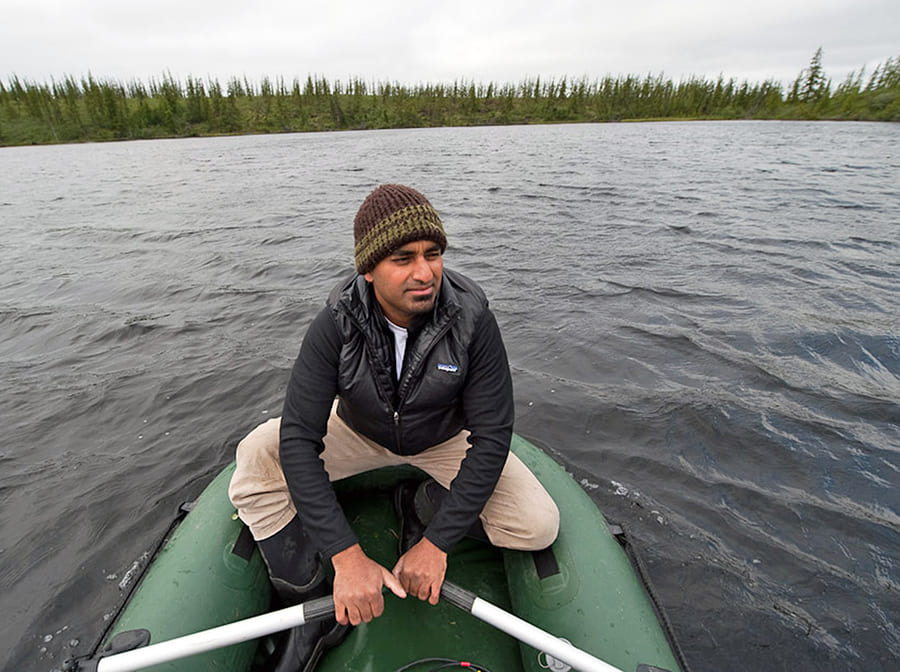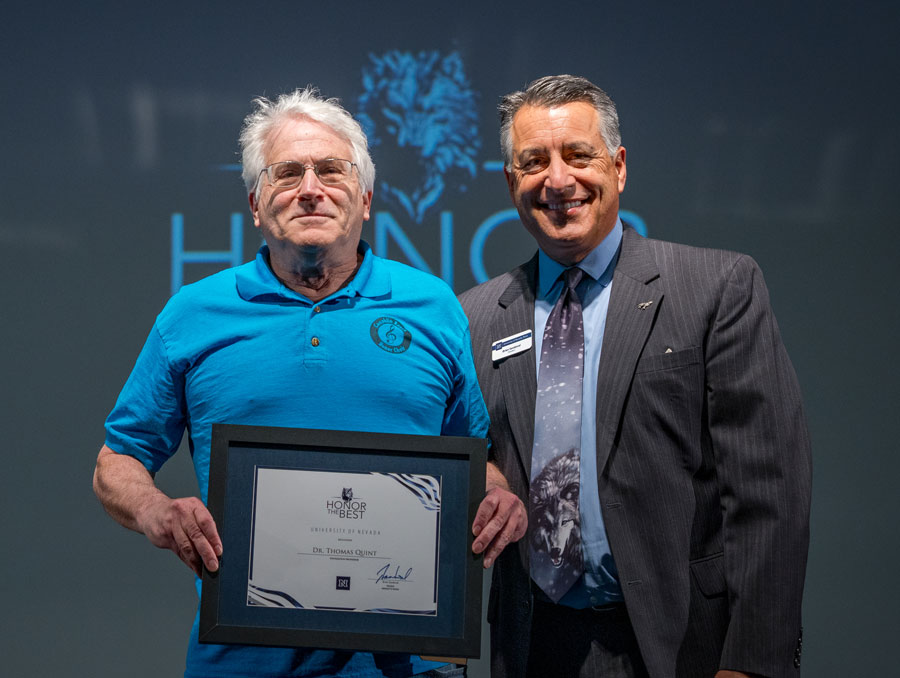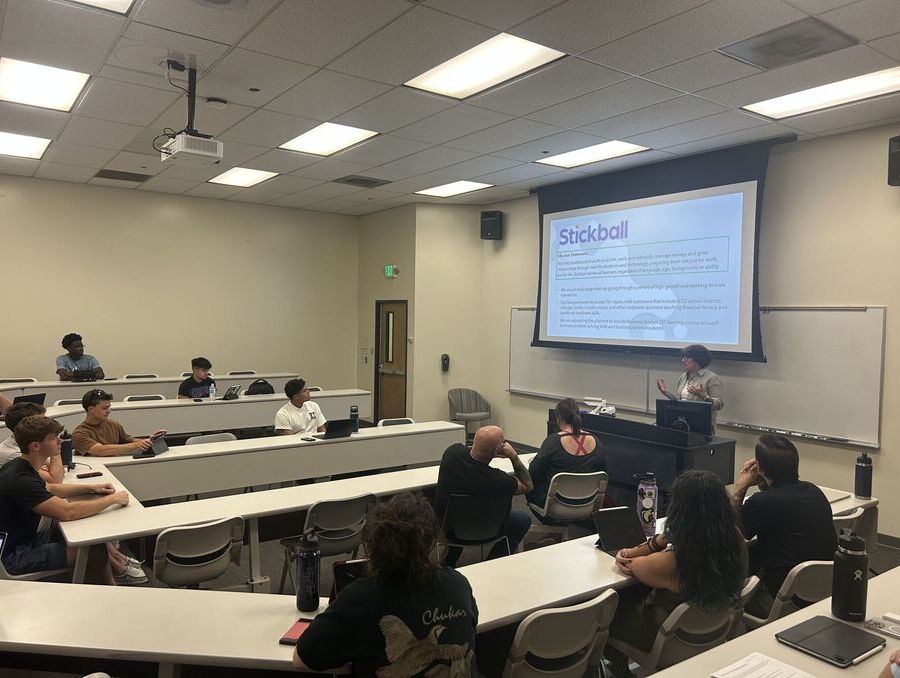Rowing around in the Siberian arctic to get water and sediment samples, setting tracking devices for invasive large-mouth bass in Lake Tahoe or digging quagga mussels out of Lake Mead is all part of the job for Sudeep Chandra, assistant professor of limnology and conservation ecology at the University of Nevada, Reno.
For his outstanding work in Nevada lakes, including his prolific record of publication and leadership on important fisheries and aquatic ecosystem management issues, the American Fisheries Society California-Nevada Chapter has bestowed Chandra with their highest honor, the Award of Excellence.
“This award is infrequently granted, because so few fisheries professionals meet the award’s high standards,” Pat Coulston, chairman of the awards committee, said. “The last time the award was granted was 10 years ago. It’s a prestigious and exclusive award.”
Chandra’s prolific scientific work on some of Nevada’s highest priority fisheries management issues clearly places him at this high standard, Coulston said. Recipients of the award must have achieved statewide recognition as a major authority in California and/or Nevada fisheries management and science.
“I am deeply honored to be nominated and receive this award,” Chandra said. “I am grateful that the selection committee has bestowed upon our laboratory the Award of Excellence. I will continue to work diligently to use scientific information to conserve and restore fishes in the Great Basin.”
Chandra often serves on, or presents information to, technical and policy groups addressing fisheries conservation and aquatic ecosystem management concerns for Lake Tahoe, Lake Mead, Walker Lake, Pyramid Lake and the Truckee River. His focus on applied science has allowed him to develop a very constructive working relationship with the fisheries arm of the Nevada Department of Wildlife.
Chandra is a leading researcher on invasive species in Lake Mead, working with the National Park System to better understand the ecology of the lake and the human-caused effects through study of the lake’s food web. His studies, such as his work on the quagga mussel invasion, have been instrumental in developing strategies to control invasive species in Lake Mead and Lake Tahoe.
Whether he’s lecturing to a classroom of undergraduates or leading a team of researchers to Guatemala to study and help restore a toxic lake, Chandra’s easy-going style and extensive background helps to build those associations.
“Sudeep has one of UNR’s most effective outreach programs,” Kurt Pregitzer, professor and chair of the department of natural resources and environmental science, said. “He and his students are exceptionally dedicated to protecting our freshwater resources – from water quality through the entire food web. For example, he was instrumental in helping to establish the boat-washing stations at Lake Tahoe to work to prevent the spread of invasive species. Sudeep is a fantastic teacher and is very involved with students at all levels.”
Also important to the committee’s decision for the Award of Excellence is Chandra’s work in developing countries where fisheries management efforts are limited and the fisheries resources are at great risk and poorly understood, Coulston said. The Chapter shares this interest in facilitating effective fishery research and management in developing countries, and has expressed this interest by assisting its Mexican fisheries colleagues in establishing an AFS Chapter in Mexico and by helping Mexican scientists participate in California-Nevada Chapter conferences.
Chandra’s professional accomplishments extend well beyond northern Nevada. He is associate director of the Castle Lake Limnological Research Station, the oldest mountain lake ecological station located in Northern California; a principal investigator with The Polaris Project, a project that examines the effects of climate change on thawing permafrost in Siberia; and a leading participant in the Aquatic Ecosystem Analysis Laboratory. His work with the AEAL includes fisheries research and conservation efforts with giant trout in Mongolia and Russia, giant freshwater species in Asia, and Mangrove ecosystems in Mexico.















